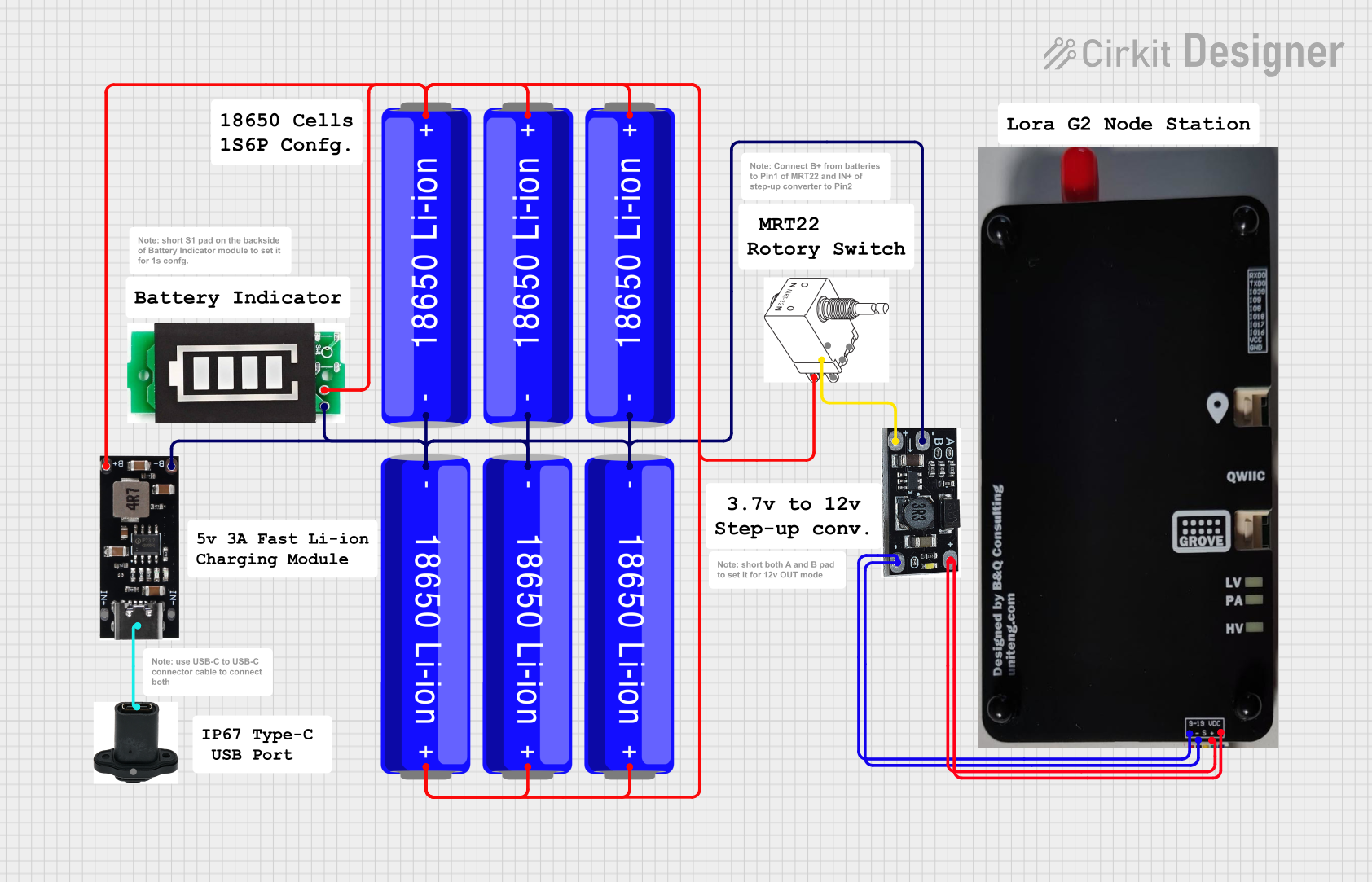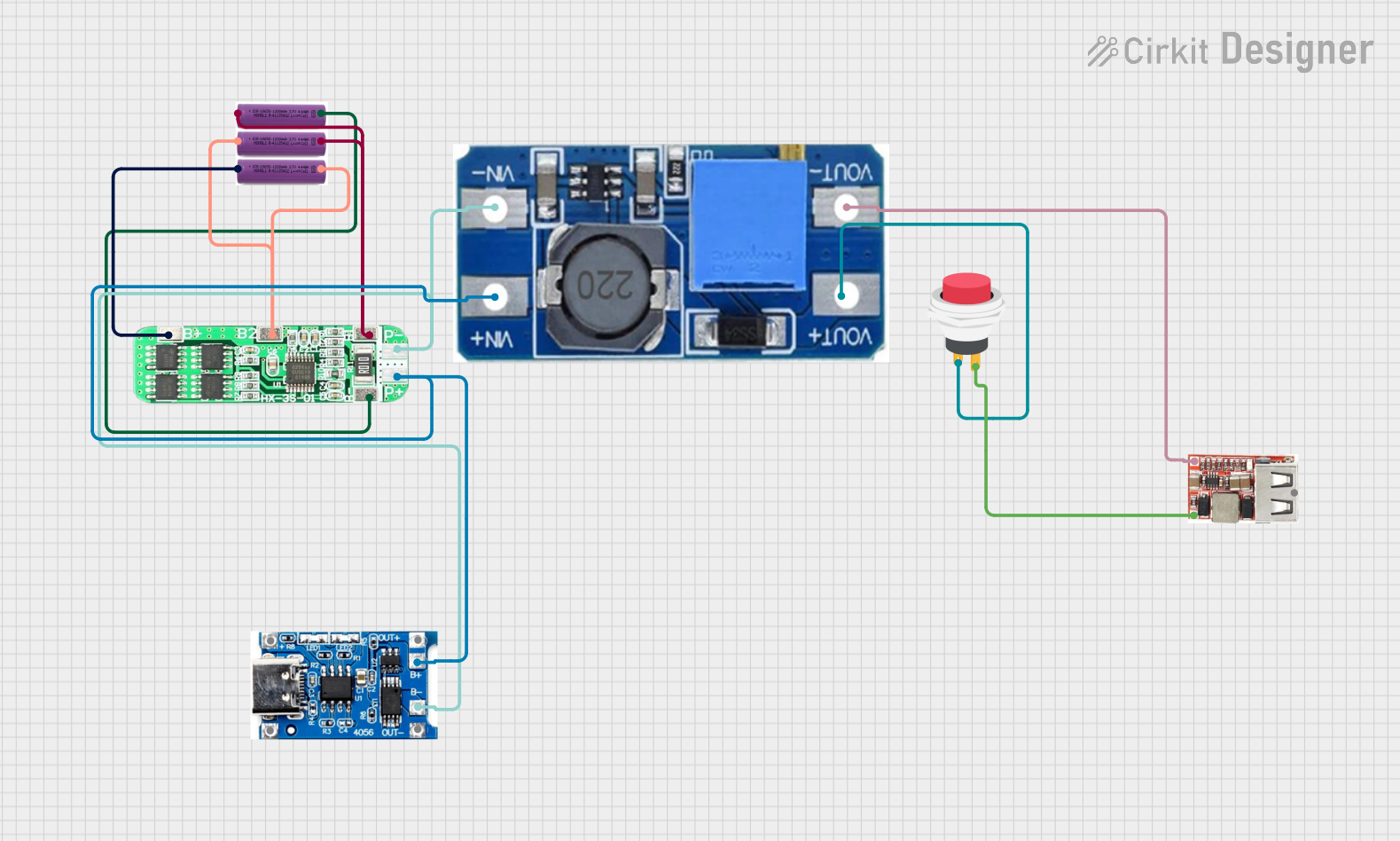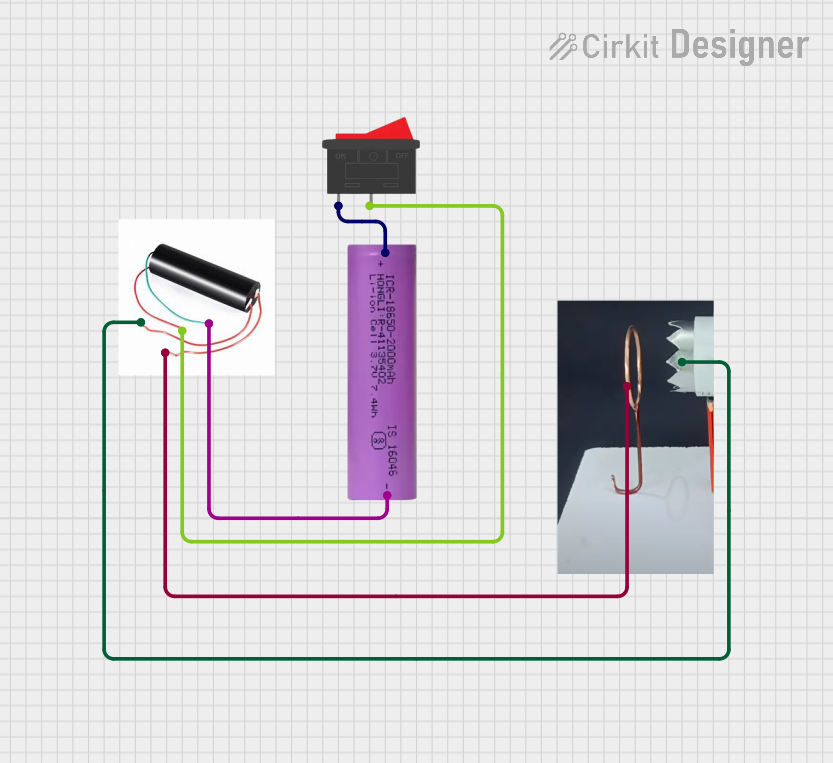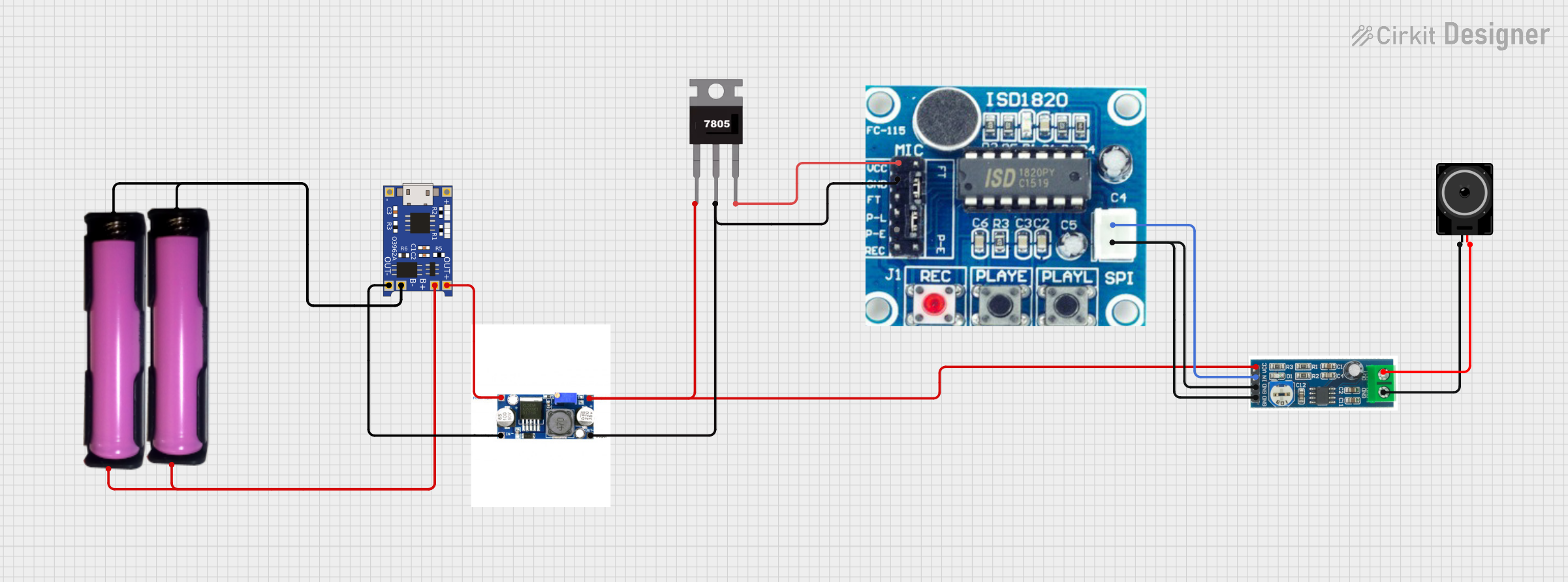
How to Use 18650 Battery Boost Step Up Module 5V : Examples, Pinouts, and Specs

 Design with 18650 Battery Boost Step Up Module 5V in Cirkit Designer
Design with 18650 Battery Boost Step Up Module 5V in Cirkit DesignerIntroduction
The 18650 Battery Boost Step Up Module 5V is a compact and efficient circuit module designed to step up the voltage from a single 18650 lithium-ion battery (typically 3.7V nominal) to a stable 5V output. This module is ideal for powering devices that require a higher voltage than the battery can provide, such as USB-powered devices, microcontrollers, and portable electronics.
Explore Projects Built with 18650 Battery Boost Step Up Module 5V

 Open Project in Cirkit Designer
Open Project in Cirkit Designer
 Open Project in Cirkit Designer
Open Project in Cirkit Designer
 Open Project in Cirkit Designer
Open Project in Cirkit Designer
 Open Project in Cirkit Designer
Open Project in Cirkit DesignerExplore Projects Built with 18650 Battery Boost Step Up Module 5V

 Open Project in Cirkit Designer
Open Project in Cirkit Designer
 Open Project in Cirkit Designer
Open Project in Cirkit Designer
 Open Project in Cirkit Designer
Open Project in Cirkit Designer
 Open Project in Cirkit Designer
Open Project in Cirkit DesignerCommon Applications and Use Cases
- Powering USB devices (e.g., smartphones, LED lights, fans)
- Supplying 5V to microcontrollers like Arduino or Raspberry Pi
- Portable power banks and DIY battery packs
- Emergency backup power for small electronics
- Educational and prototyping projects
Technical Specifications
The following table outlines the key technical details of the 18650 Battery Boost Step Up Module 5V:
| Parameter | Specification |
|---|---|
| Input Voltage Range | 2.5V - 4.2V (typical for 18650 cells) |
| Output Voltage | 5V (regulated) |
| Output Current | Up to 1A (depending on input voltage) |
| Efficiency | Up to 92% |
| Dimensions | ~36mm x 17mm x 7mm |
| Protection Features | Overcurrent, short circuit, and thermal protection |
Pin Configuration and Descriptions
The module typically has the following pins or terminals:
| Pin/Terminal | Description |
|---|---|
+ (Input) |
Positive terminal for the 18650 battery input |
- (Input) |
Negative terminal for the 18650 battery input |
+ (Output) |
Positive terminal for the 5V output |
- (Output) |
Negative terminal for the 5V output |
Usage Instructions
How to Use the Module in a Circuit
- Connect the Battery:
- Attach the positive terminal of the 18650 battery to the
+input pin. - Attach the negative terminal of the battery to the
-input pin.
- Attach the positive terminal of the 18650 battery to the
- Connect the Load:
- Connect the device or circuit requiring 5V to the
+and-output pins.
- Connect the device or circuit requiring 5V to the
- Power On:
- Ensure the battery is charged and within the input voltage range (2.5V - 4.2V).
- The module will automatically boost the voltage to a stable 5V output.
Important Considerations and Best Practices
- Battery Protection: Use a protected 18650 battery or a separate battery protection circuit to prevent over-discharge or overcurrent conditions.
- Heat Management: Avoid drawing excessive current for prolonged periods, as this may cause the module to overheat.
- Input Voltage: Ensure the input voltage does not drop below 2.5V, as this may cause the module to stop functioning or damage the battery.
- Output Current: Do not exceed the maximum output current (1A) to prevent damage to the module or connected devices.
Example: Using with an Arduino UNO
The 18650 Battery Boost Step Up Module can be used to power an Arduino UNO via its 5V pin. Below is an example setup:
- Connect the module's
+output to the Arduino's5Vpin. - Connect the module's
-output to the Arduino'sGNDpin. - Ensure the 18650 battery is properly connected to the module.
Here is a simple Arduino sketch to blink an LED while powered by the module:
// This sketch blinks an LED connected to pin 13 of the Arduino UNO.
// Ensure the Arduino is powered via the 18650 Battery Boost Step Up Module.
void setup() {
pinMode(13, OUTPUT); // Set pin 13 as an output pin
}
void loop() {
digitalWrite(13, HIGH); // Turn the LED on
delay(1000); // Wait for 1 second
digitalWrite(13, LOW); // Turn the LED off
delay(1000); // Wait for 1 second
}
Troubleshooting and FAQs
Common Issues and Solutions
No Output Voltage:
- Cause: The input voltage is too low or the battery is discharged.
- Solution: Check the battery voltage and ensure it is within the 2.5V - 4.2V range. Recharge the battery if necessary.
Module Overheating:
- Cause: Excessive current draw or poor ventilation.
- Solution: Reduce the load current or improve airflow around the module.
Output Voltage Drops Below 5V:
- Cause: The input voltage is too low or the load current exceeds the module's capacity.
- Solution: Use a fully charged battery and ensure the load current does not exceed 1A.
Device Not Powering On:
- Cause: Incorrect wiring or a faulty module.
- Solution: Double-check all connections and replace the module if necessary.
FAQs
Q: Can I use this module with other types of batteries?
A: This module is specifically designed for 18650 lithium-ion batteries. Using other types of batteries may result in improper operation or damage.
Q: Can I charge the 18650 battery while using this module?
A: No, this module does not include a charging circuit. Use a separate 18650 battery charger for charging.
Q: What happens if I exceed the maximum output current?
A: The module includes overcurrent protection and will shut down to prevent damage. Reduce the load and restart the module.
Q: Can I use this module to power a Raspberry Pi?
A: Yes, but ensure the total current draw of the Raspberry Pi and connected peripherals does not exceed 1A.